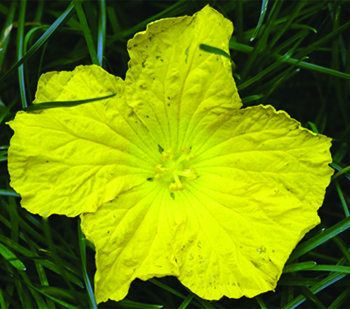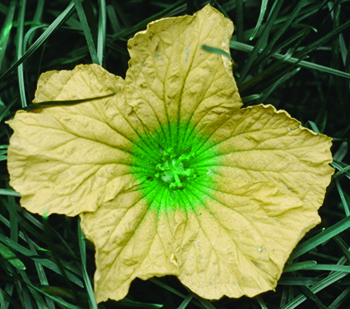Excerpts from an article by Rebecca Finneran, Michigan State University Extension, February 2016
Pollinators are essential to our environment and are uniquely linked to our food supply. They pollinate more than 85 percent of the world’s flowering plants and are ultimately responsible for the seeds and fruits and vegetables eaten by humans. Pollinators and native bees will feed on many different types of flowering plants in your landscape and garden.
Bees will forage on hundreds of different flowering plants, but they especially love purple, blue, white, yellow, mauve or violet flowers. Using UV light, bees see things in flowers our eyes cannot, including patterns, colors and markings, which enables them to pilot directly to a “landing pad” leading to the pollen source.

Flower, Human Vision by Zachary Huang, MSU

Flower, Insect Vision by Zachary Huang, MSU
Colorful annuals and herbs can really pack a punch with attractive colors while providing a long bloom season. Other annuals such as tall salvia (Victoria blue or white), lantana and Pentas add color and provide nectar and pollen for many bee species. Perennial favorites such as bleeding heart, foxglove and Allium ‘Purple Sensation’ bring in the late-spring show audience and larger bees are often seen feeding on these beauties. By choosing sunflowers that are branched and range in days-to-harvest by a week or so, you can provide fresh blooms for a longer period.
So, think about “serving” up a menu of blooms in early spring through fall. Choose a wide range of flowering plants including annuals, herbaceous perennials and native plants, bulbs, trees and shrubs that are known to support pollinator health.
Michigan State University, College of Agriculture and Natural Resources
by CMG Adrienne